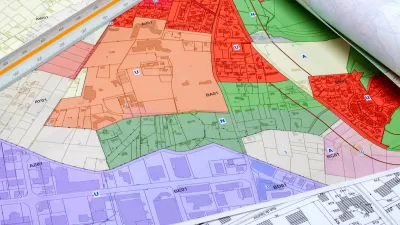India’s foremost environmental think tank is touting a recently developed sustainable building certification program "Green Rating for Integrated Habitat Assessment" (GRIHA) as more holistic than LEED. Could it also help enforce labor laws?
Martin Wright looks at The Energy and Resources Institute’s (TERI) Green Rating for Integrated Habitat Assessment (GRIHA), which, he explains, is a more holistic green building assessment tool than LEED: "valuable as it is, LEED only covers a building’s potential performance – as opposed to what actually happens when people start inhabiting it."
Some may ask then: what is the value of India having its own 'green building' assessment system?
“We do [site] visits unannounced: check whether the workers have got decent sanitation, whether they’re being provided with drinking water, and so on,” says Mili Majumdar, Director of TERI’s Sustainable Habitat Division, in describing one element of TERI's assessment program that goes beyond the United States Green Building Council's LEED certification. Utilizing a green building certification process to ensure the health and safety of workers seems a novel approach in a country where the government enforces labor laws on an ad hoc basis.
Despite only 1% of buildings in India certified as 'green buildings' and 0.25% assessed through GRIHA, "the Government is taking tentative steps to set minimum compulsory standards for all new state buildings, and redirecting incentives at developers themselves," Wright reveals.
Will GRIHA be the ratings system of choice for those standards? TERI will have a chance to further advocate for GRIHA when it hosts the "Delhi Sustainable Development Summit" beginning January 31, 2013; where dozens of international political, thought and business leaders, ministers and media of the 'global south' will gather.
FULL STORY: A people-centred approach to green build

Maui's Vacation Rental Debate Turns Ugly
Verbal attacks, misinformation campaigns and fistfights plague a high-stakes debate to convert thousands of vacation rentals into long-term housing.

Planetizen Federal Action Tracker
A weekly monitor of how Trump’s orders and actions are impacting planners and planning in America.

San Francisco Suspends Traffic Calming Amidst Record Deaths
Citing “a challenging fiscal landscape,” the city will cease the program on the heels of 42 traffic deaths, including 24 pedestrians.

Defunct Pittsburgh Power Plant to Become Residential Tower
A decommissioned steam heat plant will be redeveloped into almost 100 affordable housing units.

Trump Prompts Restructuring of Transportation Research Board in “Unprecedented Overreach”
The TRB has eliminated more than half of its committees including those focused on climate, equity, and cities.

Amtrak Rolls Out New Orleans to Alabama “Mardi Gras” Train
The new service will operate morning and evening departures between Mobile and New Orleans.
Urban Design for Planners 1: Software Tools
This six-course series explores essential urban design concepts using open source software and equips planners with the tools they need to participate fully in the urban design process.
Planning for Universal Design
Learn the tools for implementing Universal Design in planning regulations.
Heyer Gruel & Associates PA
JM Goldson LLC
Custer County Colorado
City of Camden Redevelopment Agency
City of Astoria
Transportation Research & Education Center (TREC) at Portland State University
Jefferson Parish Government
Camden Redevelopment Agency
City of Claremont





























